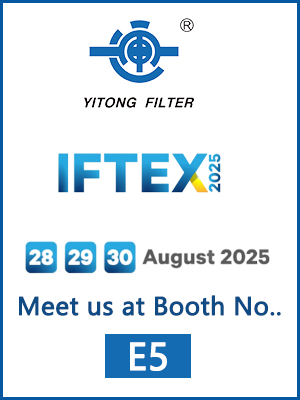 November 20, 2023
November 20, 2023
I. Introduction
A. Definition of Cleanroom
1. **Overview:** A cleanroom is a controlled environment designed to minimize airborne particulates, pollutants, and other contaminants.
2. **Key Characteristics:** It maintains specific levels of cleanliness by regulating factors like air quality, temperature, humidity, and pressure.
3. **Purpose:** Cleanrooms are crucial in industries requiring sterile or contaminant-free environments, such as pharmaceuticals, semiconductor manufacturing, biotechnology, and healthcare.
B. Importance of Air Filtration in Cleanroom Environments
1. **Critical Role:** Air filtration serves as a fundamental component in maintaining cleanliness within cleanroom facilities.
2. **Contaminant Mitigation:** Airborne particles, microbes, and pollutants can jeopardize sensitive processes and products, necessitating robust air filtration systems.
3. **Impact on Operations:** The efficiency and reliability of air filtration directly impact the quality of products, research outcomes, and safety protocols within cleanroom settings.
4. **Compliance and Standards:** Adherence to stringent cleanliness standards, often defined by organizations like ISO (International Organization for Standardization), underscores the significance of effective air filtration systems in cleanrooms.
II. Cleanroom Classification and Standards
A. Overview of Cleanroom Classes (ISO standards)
Cleanroom classifications, as outlined by the International Organization for Standardization (ISO), serve as a vital framework for assessing and categorizing cleanrooms based on their cleanliness level. These classifications are determined by the concentration of airborne particles within a specified volume of air. The ISO 14644-1 standard is widely used for this purpose, defining different classes of cleanrooms.
The classes range from Class 1 to Class 9, with Class 1 representing the most stringent requirements for cleanliness and Class 9 having relatively higher allowances for particle counts. Each class corresponds to specific limits on the size and quantity of particles permitted per cubic meter of air, ensuring a controlled environment conducive to the specific needs of different industries.
B. Particle Count Limits for Different Cleanroom Classes
The particle count limits prescribed by ISO standards vary significantly across cleanroom classes. For instance, Class 1 cleanrooms, designed for highly sensitive processes like semiconductor manufacturing, have extremely low particle count limits. These cleanrooms may allow only a few particles larger than 0.1 micrometers per cubic meter of air.
In contrast, Class 9 cleanrooms, commonly found in less critical applications such as some warehouse facilities, permit higher particle counts, allowing larger particles and a comparatively relaxed standard of cleanliness.
C. Importance of Air Quality in Various Industries (pharmaceuticals, electronics, etc.)
The significance of air quality in different industries cannot be overstated. In pharmaceutical manufacturing, where sterility is paramount, cleanrooms play a pivotal role in ensuring the integrity of medicinal products. Any contamination could compromise the safety and efficacy of pharmaceuticals, leading to potential health risks for consumers.
Similarly, in electronics and semiconductor manufacturing, even minute particles can adversely affect the performance and reliability of sensitive components. Cleanrooms in these industries are essential to prevent defects and maintain the quality standards of electronic devices.
Furthermore, the healthcare sector, including hospitals and research laboratories, heavily relies on cleanrooms to maintain aseptic conditions for surgeries, experiments, and patient care. Biotechnology firms also depend on cleanrooms to safeguard delicate experiments and maintain the purity of biological products.
In summary, cleanroom environments and the maintenance of high air quality are critical across diverse industries, ensuring product quality, safety, and the success of sensitive processes.
III. Air Filter Technologies
A. Types of Air Filters Used in Cleanrooms
Cleanrooms employ various types of air filters to achieve different levels of air purification. Among these, some prominent filters include:
1. **High-Efficiency Particulate Air (HEPA) Filters:** HEPA filters are highly efficient at removing particles as small as 0.3 micrometers with a filtration efficiency of 99.97%. These filters are widely used in cleanrooms across different industries for their exceptional particle removal capabilities.
2. **Ultra-Low Penetration Air (ULPA) Filters:** ULPA filters offer even higher filtration efficiency, capturing particles as small as 0.12 micrometers with efficiencies exceeding 99.99%. They are employed in ultra-clean environments requiring extremely low particle counts.
3. **Other Specialized Filters:** Depending on specific cleanroom needs, additional filters like activated carbon filters, molecular filters, and electrostatic filters may also be used for removing gases, odors, and certain molecular contaminants.
B. Filter Efficiency Ratings and Specifications
Air filter efficiency is assessed based on standardized ratings and specifications that determine their effectiveness in removing particles of varying sizes. Common metrics include:
1. **Particle Removal Efficiency:** This measures the percentage of particles of a specified size that the filter can capture. For HEPA and ULPA filters, efficiency ratings are typically specified for different particle sizes.
2. **Pressure Drop:** It refers to the resistance encountered by air passing through the filter. Lower pressure drop indicates less airflow resistance, enabling more efficient operation while maintaining airflow rates.
3. **Filter Classifications:** Filters are categorized into classes based on their efficiency at removing particles. These classifications align with the cleanroom standards discussed earlier (e.g., HEPA filters meeting specific standards for different cleanroom classes).
C. Comparison of Filtration Technologies (Advantages and Disadvantages)
1. **HEPA vs. ULPA:** HEPA filters are effective in capturing 99.97% of particles sized 0.3 micrometers, while ULPA filters boast even higher efficiencies (>99.99%) for smaller particles (0.12 micrometers). ULPA filters offer superior cleanliness but might have higher pressure drops, impacting airflow.
2. **Advantages and Disadvantages:** HEPA filters are more commonly used due to their balance between efficiency and cost-effectiveness. ULPA filters, although highly efficient, can be more expensive and require higher energy for operation. Specialized filters address specific contaminants but might add complexity and cost to the filtration system.
Understanding the differences in filtration technologies allows for informed decisions in selecting the most suitable filters based on cleanroom requirements, efficiency, and cost considerations.
Certainly, here's an outline for the functioning of air filters in cleanroom environments:
IV. Functioning of Air Filters in Cleanroom Environments
A. Air Circulation Systems in Cleanrooms
Cleanrooms are equipped with sophisticated air circulation systems designed to maintain controlled environments. These systems typically include:
1. **HVAC Systems:** Heating, Ventilation, and Air Conditioning (HVAC) systems regulate temperature, humidity, and airflow within the cleanroom.
2. **Unidirectional Flow:** Many cleanrooms employ unidirectional airflow, where air moves in a single direction at a constant velocity to minimize particle disturbances and maintain cleanliness levels.
B. Role of Air Filters in Contaminant Removal
1. **Particulate Removal:** Air filters serve as the primary defense against airborne contaminants. HEPA and ULPA filters trap particles as air passes through, preventing particles of specified sizes from circulating within the cleanroom.
2. **Microbial Control:** Filters also aid in controlling microbial contamination by capturing bacteria, viruses, and other microorganisms, contributing significantly to maintaining sterile environments.
C. Impact of Airflow Rates and Pressure Differentials on Filtration
1. **Airflow Rates:** The rate at which air passes through filters influences the filtration efficiency. Optimal airflow rates ensure effective particle capture without compromising the overall system performance.
2. **Pressure Differentials:** Differential air pressures between cleanrooms and adjacent areas prevent contaminated air from infiltrating the cleanroom. Proper pressure differentials across filters ensure that air flows through the filters, enhancing their efficiency.
Understanding the interplay between air circulation systems, air filters, and their impact on maintaining cleanroom environments is crucial for optimizing filtration efficiency and ensuring the desired cleanliness levels.
V. Selection and Maintenance of Air Filters
A. Factors Influencing Filter Selection
1. **Particle Size and Type:** The size and nature of contaminants dictate the type of filter required. HEPA and ULPA filters are chosen based on their efficiency in capturing specific particle sizes.
2. **Airflow Requirements:** Filters must be selected to meet the required airflow rates while maintaining efficiency. Balancing the necessary airflow with filtration efficiency is crucial.
3. **Cleanroom Class Specifications:** Aligning filter selection with the cleanroom class requirements ensures compliance with the necessary standards for particle count and cleanliness.
4. **Environmental Conditions:** Consideration of factors like temperature, humidity, and chemical exposure aids in selecting filters that withstand and perform well under specific environmental conditions.
B. Importance of Regular Filter Maintenance and Replacement
1. **Maintaining Filtration Efficiency:** Regular cleaning or replacement of filters prevents a decline in filtration efficiency caused by particle buildup or clogging, ensuring consistent performance.
2. **Preventing Contamination:** Dirty or degraded filters can lead to compromised air quality, potentially allowing contaminants to enter the cleanroom environment, emphasizing the critical need for maintenance.
3. **Cost-Efficiency:** Scheduled maintenance and timely replacements not only sustain optimal filtration performance but also prevent costly downtime and equipment damage caused by inefficient filters.
C. Strategies for Maximizing Filter Lifespan and Efficiency
1. **Scheduled Inspections and Maintenance:** Implementing a routine schedule for filter inspections, cleanings, and replacements based on manufacturer recommendations or operational needs is crucial.
2. **Proper Handling and Storage:** Ensuring proper handling during installation and storing filters in controlled environments before use prevents damage or contamination before deployment.
3. **Monitoring and Tracking:** Implementing systems to monitor filter performance and track their lifespan aids in timely replacements and maintenance scheduling.
Addressing these factors and adopting proactive maintenance strategies not only extends the lifespan of air filters but also ensures consistent filtration efficiency, critical for maintaining the cleanliness and functionality of cleanroom environments.
VI. Applications of Air Filters in Different Industries
A. Cleanroom Usage in Pharmaceuticals and Biotechnology
1. **Pharmaceutical Manufacturing:** Cleanrooms in pharmaceutical facilities maintain sterile environments crucial for drug manufacturing, ensuring product safety and efficacy.
2. **Biotechnology Research:** Cleanrooms in biotech labs provide controlled environments for sensitive experiments, cultivating and handling biological materials, and manufacturing biopharmaceuticals.
B. Cleanroom Requirements in Semiconductor Manufacturing
1. **Particle Sensitivity:** Semiconductor manufacturing demands ultra-clean environments due to the extreme sensitivity of electronic components to contaminants.
2. **Stringent Cleanliness Standards:** Cleanrooms in semiconductor fabs adhere to strict standards (e.g., Class 1 to Class 10 cleanrooms) to prevent even microscopic particles from impacting chip quality.
C. Cleanroom Applications in Healthcare Facilities
1. **Surgical Theaters:** Cleanrooms in hospitals ensure sterile conditions for surgeries, minimizing the risk of infections and maintaining patient safety.
2. **Laboratory Settings:** Cleanrooms in healthcare research labs facilitate controlled environments for conducting experiments, handling sensitive materials, and producing medical devices.
Each industry's reliance on cleanroom environments underscores the critical role of air filters in maintaining controlled and contaminant-free spaces essential for specific processes, research, and product development.
VII. Conclusion
A. Recap of the Importance of Air Filters in Cleanroom Environments
Air filters serve as the cornerstone of maintaining controlled environments within cleanrooms, offering the following pivotal contributions:
1. **Contaminant Mitigation:** Air filters are fundamental in removing airborne particles, microbes, and pollutants, safeguarding sensitive processes and products in various industries.
2. **Compliance with Standards:** Adherence to stringent cleanliness standards, facilitated by efficient air filters, ensures compliance with industry-specific regulations and ISO standards.
3. **Protection of Processes and Products:** The reliable functioning of air filters directly impacts the quality, safety, and integrity of products manufactured in cleanroom environments, such as pharmaceuticals, electronics, and biotechnology.
By effectively capturing contaminants and maintaining cleanliness levels, air filters play an indispensable role in sustaining the functionality and reliability of cleanroom environments across diverse industries.

